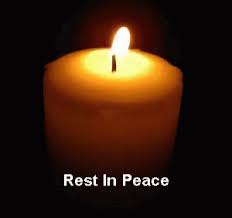I watched the royal wedding a few weeks ago, an interracial marriage with Price Harry, part of the British Royal Family and Princess Meghan Markle a TV actress, who happens to be bi-racial. As they declared their love for each other I found myself thinking about the concept of race. A concept intensified during the 18th century to justify slavery and I thought about racism along with its foolish doctrine of superiority and inferiority based on skin color and how this doctrine pits people against each other. This royal couple did not allow race to separate them from love.
At the time of this writing an economic recession has hit white rural America. This recession is playing a major role in triggering a heroin epidemic and according to the U.S. Department of Public Health this epidemic has decreased the life expectancy of white males in America by a full year. According to addictions historian William White, MA, history reveals that whenever there is an economic recession we can expect to see a stimulant or opiate epidemic. In the 1980's when the recession hit African American communities, cocaine addiction dramatically increased.
Race baiters have a way of capitalizing on this economic recession, Individuals reading this blog post 40 years from now will be able to use some form of advanced technology to view President Donald Trump walk down an escalator, wearing a blue suit, white shirt and red tie and announce his run for presidency. Speaking of Mexico he declared, "They are not our friend. When Mexico sends its people, they're not sending their best. They are bringing drugs, they're bringing crime, they're bringing rapist. I will build a great wall along our southern border and I will have Mexico pay for it.” This statement provided a false sense of hope to white rural America that this would improve their financial situation. He was elected President of the United States.
Steve Bannon, a part of trumps inner circle has used his pen to blame African Americans and Hispanics for white poverty in America with a goal of pitting groups against each other. The truth at the time of this writing is that American corporations and the executives who lead them are making huge profits and the money is not trinkling down to average Americans and jobs are being eliminated. Pitting groups against each other helps assure that these groups won't work together to fight corporate greed or to fight for their fair share of the pie.
In the 1960's when Dr Martin Luther King was incarcerated in a Birmingham Alabama jail for marching, the prison guards were talking to Dr King about where they lived and how much money they were making. Listening to the guards Dr. King said, "You ought to be marching with us. You're just as poor as Negroes. You are put in the position of supporting your oppressor, because of prejudice and blindness, you fail to see that the same force that oppresses Negroes in American society oppresses poor white people."
One of the best things which came out of the war on drugs has been recovery rallies and marches all over the nation which illustrates that recovery knows not one face, one race, one culture or one pathway of recovery. People of all cultures marching side by side celebrating recovery.
Bishop Michael Curry, the first Black Bishop of the Episcopal Church spoke at the Royal Wedding. I end this blog post with his words. "When love is the way, no child will ever go to bed hungry and poverty will be history."




















